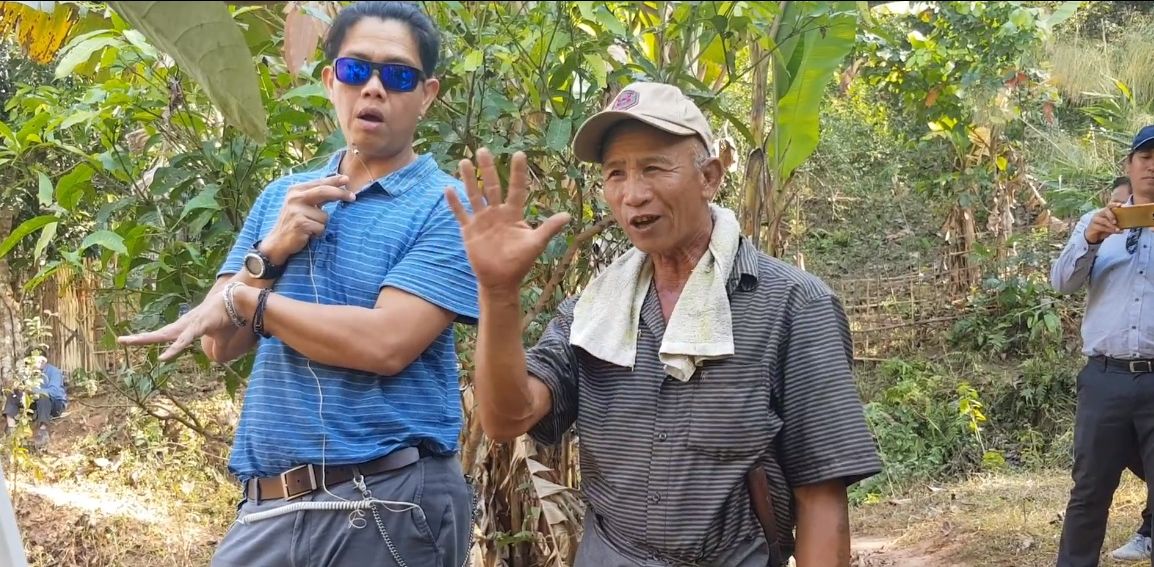Almost four years ago, UNDP had a project in Xayaboury Province of northern Lao PDR to help farmers in their struggles to cope with climate change. This February, we returned to one of the villages to see how they have managed with changing weather conditions ever since.
Vientiane, 12 March 2019 – The Sustainable Development Goals, adopted by the global community in 2015, compels us at UNDP Lao PDR to take even more responsibility to ensure that our projects do not only offer a temporary sigh of relief to struggling communities in Lao PDR, but that they serve as an enduring foundation on which they can begin to build a more sustainable future for themselves.
That is why in February 2019, UNDP, along with members of the Green Climate Fund and representatives of the Ministry of Natural Resources and Environment and the Ministry of Agriculture and Forestry, took a trip to Nasom Village in Xayaboury Province to catch up with some old friends made during a project entitled “Improving the Resilience of the Agricultural Sector to Climate Change”, which was implemented between 2011-2015.
In the early 2000s, the farming population of Nasom had difficulties in adjusting to a phenomenon most of them had probably never even heard of: climate change. Although the small village nestled in a modest valley between the lush hillsides of northern Laos had occasionally suffered from floods, the usual predictability of seasons had become a thing of the past.
While the rainy seasons seemed to gradually get more intense, the dry seasons were getting hotter and drier, barely offering a shower for the rice fields of the village, which resulted in bad harvests. As rice was the primary ingredient of the rather stoic daily diet of the villagers, a bad harvest often marked a serious menace of malnutrition. Even if the farmers could feed themselves with stocks in case of a bad harvest, not being able to sell any surplus at the local market meant a significant dip in their yearly incomes.
The communities had done an excellent job in maintaining the reservoirs that the project had dug many years ago
Either too much or too little water for irrigating the paddy fields was the biggest challenge for the villagers. The project, implemented by UNDP and the Ministry of Agriculture and Forestry, and funded by the Global Environment Facility (GEF) wanted to devise a way in which they could manage and utilize the dramatically varying rates of rainfall as efficiently as possible.
The project laid out a plan to dig numerous reservoirs in the village in which the rain could be stored throughout the year. Irrigation canals were built through which the villagers could regulate the flow of the standing water to their paddy fields during different seasons.
The ponds were filled with fish to give villagers an additional source of protein. As fish like to indulge in the mosquito larvae that breed particularly in standing waters, they would also protect the villagers from the deathly threat of malaria.
When the project ended in 2014, the results were fantastic. Villagers no longer went hungry and they could once again plan their harvests despite the changing weather patterns. However, it is not uncommon in development work that such achievements slowly fade away as years pass by and the community’s lack of resources or expertise for maintenance take a toll them.
In this case, the concern proved unfounded. Even after four years, the ponds were filled with water, teeming with fish. Even the devastating floods of 2018 that ravaged each province of Lao PDR had not caused the reservoirs to overflow.
Mr. Khamsao, one of the beneficiaries of the project cannot contain his excitement, when he talks about its benefits to his community.
“After the project, we have lived much better. Because we have enough water to irrigate the rice fields, we are producing much more food than before”, says Mr. Khamsao, one of the beneficiaries of the project as he takes us around the reservoirs.
The successful project had created further waves in the village: Some villagers had dug their own reservoirs, carved their own irrigation canals and also filled them with fish. In the spirit of true Lao solidarity, the farmers who had originally benefited from the project had allowed others to direct water from the big reservoirs to newly constructed smaller. This water could then be used to irrigate other farm areas. As with the original project, the results had been excellent.
This kind of creative and cooperative spirit is exactly what is needed to achieve the ambitious goals outlined in the 2030 Agenda. Villagers of Nasom show that innovation not only occurs in Silicon Valley or world-class universities, but is something that even deprived communities engage in, as long as they are given the opportunity to do so.
Please read this story in Lao
For more information, please contact:
Ildiko Hamos-Sohlo, Communications Specialist, United Nations in Lao PDR
ildiko.hamos@one.un.org
+856 20 7717 7913

 Locations
Locations






